Burj Khalifa – Learn About the World’s Tallest Building in Dubai
The Burj Khalifa is the tallest building in the world. This is a title that it has retained for just over a decade at the time of writing. This article will discuss the building that is so well-known for its height, alongside a discussion about the Burj Khalifa’s architecture, history, height, architects, and other features. Keep reading to learn more about the Burj Khalifa and why this building was constructed to be the tallest in the entire world.
A Look at the Burj Khalifa
| Architect | Adrian Smith (1944 – Present) |
| Date Constructed | 2004 – 2009 |
| Function | Mixed-use |
| Materials Used | Reinforced concrete, aluminum, and steel |
| Height | 829.8 m (or 2,722 ft) |
| Location | Dubai, United Arab Emirates |
The Burj Khalifa is, at the time of writing, the tallest building in the world. It achieved this title upon completion in 2009 and it has retained its position ever since. There was one other building that had been in construction that could have surpassed it, the Jeddah Tower in Saudi Arabia, but that particular structure has been on indefinite pause for several years, and there are currently no other buildings under construction that are planned to be taller than this incredibly tall building. This means that the Burj Khalifa’s height has been retained as its biggest claim to fame and will likely continue to do so well into the future.

However, what is the Burj Khalifa in the first place? This megatall skyscraper is located in Dubai, United Arab Emirates, and it stands at 829.8 m (or 2,722 ft). Thanks to this height, the Burj Khalifa is actually just over half a mile in height, and upon the building’s completion, it beat out the previous holder for this record, the Taipei 101. The world’s tallest building in Dubai, the Burj Khalifa, is more than just a big building though. In addition to that, it is also an architectural marvel and a building with an often-controversial history behind it. All of this means that the Burj Khalifa should make for a very interesting discussion for us today. Let’s have a look at the Burj Khalifa to see what makes it tick.
The Burj Khalifa’s History
The Burj Khalifa started its life as little more than a plan. The plan was to develop the area around it and turn it into a beacon that represents the future. The development plans were far more illustrious than just a tall building though, and it instead called for a number of other developments, such as a massive 30-acre (or 12-hectare) artificial lake, a total of at least 19 different residential skyscrapers, nine hotels, a massive mall, a wide swath of land dedicated to being parkland, and even a collection of about 30,000 residential properties. The plans around the Burj Khalifa were immensely ambitious and would lead to the area becoming a shining symbol of development planning in a country that had previously been so focused on oil as its primary export.
Much like Saudi Arabia with its famous plans to diversify away from oil as the only real resource of the country, the United Arab Emirates beat them to it in many ways.
Dubai, by the time the Burj Khalifa was constructed, was already a city for the contemporary age. It represented what cities could be in the future, but these were still early days, and the Burj Khalifa needed to stand as a symbol for more to come. So, to gain additional recognition, the building was renamed before it was even finished with its construction. The initial name had been the Burj Dubai, but it was renamed to the Burj Khalifa after the ruler of Abu Dhabi, the capital city of the United Arab Emirates. The building also gained this new name because both the wealth of the country and the capital city aided in its construction.
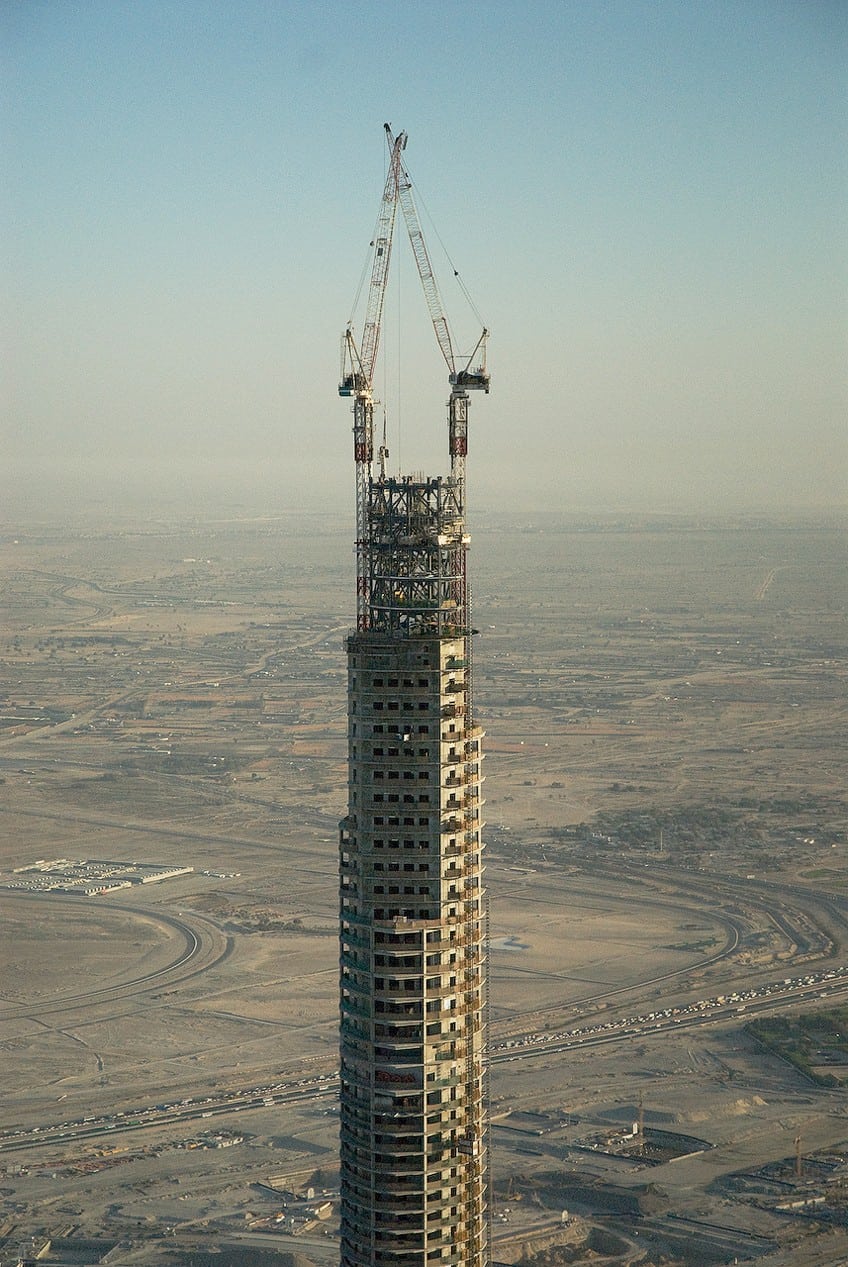
The construction of the Burj Khalifa has not been one without controversy though. This is quite common for large-scale constructions in many Middle Eastern countries though, as similar concerns have been levied as recently as the 2023 FIFA World Cup in Qatar and its use of migrant labor for its stadiums. The same was true when it came to the Burj Khalifa. The gigantic structure was built by workers who were primarily from Asia as the general local population of the country is more focused on less manual labor-oriented jobs. This would, ordinarily, be perfectly uncontroversial as it is the allowance of migrant labor, but this is not the case here. Instead, the Burj Khalifa builders were reportedly receiving minimal pay, even the highly skilled workers, and they were also being housed in terrible conditions and being worked for long hours (in some cases, the passports of migrant workers were reportedly being confiscated). There were also many injuries and even deaths, and the number of these deaths was also poorly documented and so we do not know how many such deaths actually occurred.
This is, obviously, a human rights issue and one that has been closely critiqued by the Human Rights Watch.
However, regardless of how controversial the workforce happened to be, the Burj Khalifa did ultimately continue its construction and was eventually completed. The opening ceremony was even televised. So, how long did it take to build the Burj Khalifa then? Well, it only took about six years as construction started in 2004. This did not mean that the building actually opened six years later though, in 2009. The answer to the question, When was the Burj Khalifa built, is slightly more complicated, as it took further time to continue the furnishing of the megatall skyscraper. Ultimately, the Burj Khalifa was completely done and opened to the public in early 2010. Specifically, it was opened on 4 January 2010.
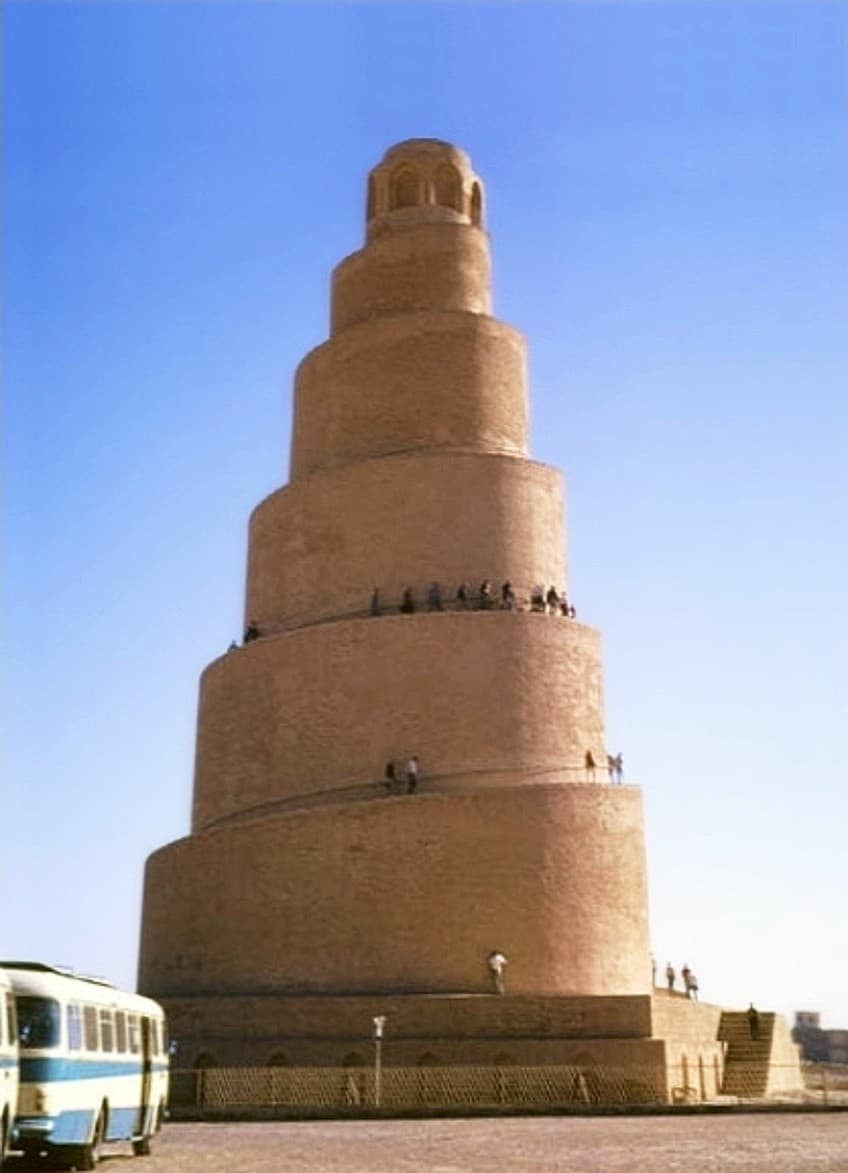
When the Burj Khalifa was opened, it was celebrated with a massive light show, and a multitude of fireworks were set off to commemorate the occasion. It was a stunning display that can actually be viewed on YouTube because it was such a magnificent sight that it needed to be recorded for posterity. In the aftermath of the Burj Khalifa’s construction, the building itself was proclaimed to be the world’s tallest building in Dubai and it received generally positive reception as an architectural structure. It even received many awards for its incredible height and because of aspects of the design as a whole.
However, the issues with migrant workers continued to hang over the story about the construction of this massive structure, but that is unlikely to ever go away.
The Burj Khalifa’s Architecture and Construction
The Burj Khalifa is known to be one of the most stunning examples of Neo-Futurist architecture in the world at present. This particular architectural and artistic style is focused on an attempt to understand the way that the buildings of the future may be structured, and proponents of this style attempt to produce buildings that are often sustainable and blend functionality and aesthetics for the contemporary era. The Burj Khalifa architecture is therefore perfectly suited to this design ethos. One of the most interesting aspects of the architectural design of this structure is that it includes elements taken from Islamic architecture in general. There are certain parts of the design that are, for instance, reminiscent of the Great Mosque of Samarra. The building’s location within the United Arab Emirates contributes to this design decision.
Neo-Futuristic architecture, and many forms of Postmodern architecture, tend to attempt to incorporate aspects of a local architectural form into the final design.
However, other than the purely aesthetic and local influences of the design, the Burj Khalifa also makes use of various sustainable and smart design principles for the contemporary era. For instance, the y-shape of the floor design is meant to aid in optimizing and maximizing the space that can be used, and the cladding that covers the tower is designed to aid in the building withstanding the kind of intense summer temperatures that the country receives.

Elements such as these quite simply make the Burj Khalifa a better structure to occupy for periods of time, as the Middle East is well known for being an immensely hot location. In addition to this, the building is made up of a special kind of concrete that is designed to be able to withstand far greater pressure than is ordinarily necessary (and this is done because the extreme weight of the structure necessitates actions such as these). The structure as a whole was designed around the bundled tubular design that had been developed by Fazlur Rahman Khan, which is a commonly used design method for tall buildings. The basic idea behind this design is that structures are constructed around a series of internal “tubes” rather than a single structure. This means that immensely tall buildings that make use of this design are constructed more as a series of buildings that are stacked on top of one another rather than having a large central steel framework to hold it all together.
This bundled tubular design adds to the structural stability of the building while also reducing the amount of steel that needs to be used by about half. This design is used in practically all tall buildings these days.
Other than the basic exterior of the structure, the Burj Khalifa is also covered in over a thousand artworks, and the residential lobby even contains a massive artwork by the artist Jaume Plensa. These artworks add to the prestige of the structure as a whole because while incorporating innovative techniques in construction will gain awe from those who adore architecture, incorporating artworks will elicit similar responses from practically everyone else.

Lastly, the Burj Khalifa should be noted for its elevators. They are some of the fastest in the world, but what is truly remarkable about them is that some of the elevators present in the building are double-decker. These double-decker elevators are also complemented with LCD displays to keep people occupied as they use the elevators to travel an immensely long distance upwards.
Furthermore, as the building has about 2,909 stairs, the elevators are probably the best bet (unless you’re looking for somewhere to do a few cardio workouts without needing to pay for a gym membership).
The Burj Khalifa’s Other Notable Features
Other than the Burj Khalifa’s incredible height or the architectural designs that went into it, the building also includes an elaborate fountain system just outside the building, a stunning outdoor observation deck that allows visitors to stand 432 m (or 1,483 ft) in the sky to gain panoramic views of the surrounding landscape, and the 124th-floor observation deck even includes an electronic telescope that makes use of technology to allow users to peer backward through time to see what sections of the landscape looked like at previous times. Aside from these more built-in features, the Burj Khalifa has also been used by several BASE jumpers. For those unfamiliar with BASE jumping, it is the act of jumping off tall buildings as if one is skydiving.
There have been a few BASE jumpers that have been granted permission to do so. Although there have also been instances of BASE jumpers disguising themselves and making unofficial jumps off the structure.
The Burj Khalifa’s Height
The incredible height of the Burj Khalifa is its most notable feature. The building is best known as the world’s tallest building in Dubai, a city that is already full of architectural marvels. The full height is 829.8 (or 2,722 ft), and at this colossal height, the Burj Khalifa stands at just over half a mile. It is an utterly gargantuan building that has retained its position as the tallest building ever since its construction came to an end over a decade ago. Furthermore, the building also includes 154 floors, and some of those floors include structures known for their height too, such as the highest restaurant in the world.
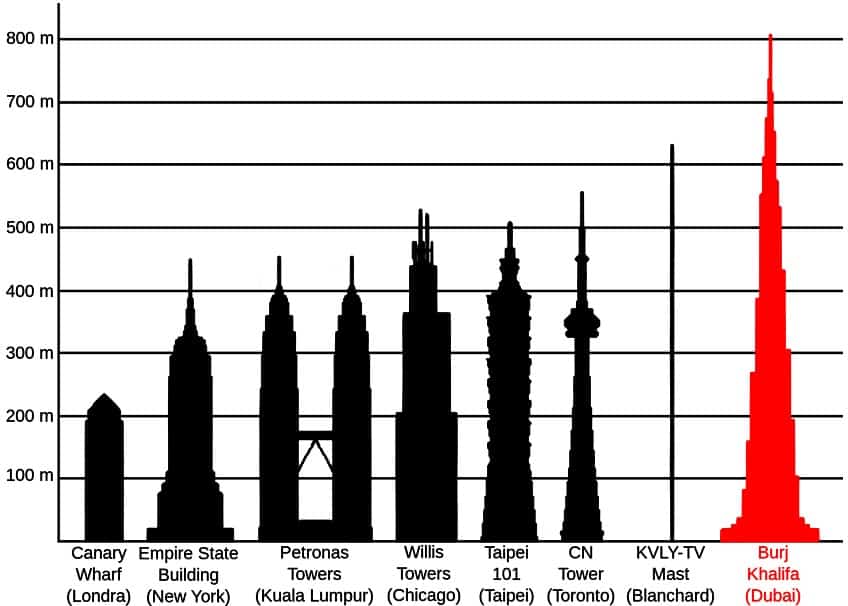
However, it is worth noting that part of the structure is considered to be vanity height, meaning height that serves no tangible purpose. The spire of the Burj Khalifa is made of steel, and it alone stands at 244 m (or 801 ft), and it is largely aesthetic. However, it has been noted by the Council on Tall Buildings and Urban Habitat that the spire alone would constitute a skyscraper’s level of height. So, the spire of the Burj Khalifa is impressive in its own right even if it is vanity height.
The Burj Khalifa’s Builders and Architects
The Burj Khalifa was designed by Skidmore, Owings & Merrill (also known as SOM), and this design firm was founded back in 1936 and has served an integral role in the development of some of the tallest skyscrapers in the world. In general terms, SOM has developed thousands of structures in its nearly one-hundred-year history, and its work on the Burj Khalifa is no different. It was one of the architects at this firm who headed up the world’s tallest building, and that man is Adrian Smith. Adrian Smith was born in 1944 in the United States, and he is the principal architect behind the design of the Burj Khalifa itself. In fact, he is also the man who designed the Jeddah Tower, which is the building that was meant to surpass the Burj Khalifa but has been hit with an indefinite pause following a period of turmoil in Saudi Arabia.
Adrian Smith has since left SOM and has instead started his own company, Adrian Smith + Gordon Gill Architecture, and it is focused on sustainable architecture on a massive scale.
However, Adrian Smith is only the architect of the Burj Khalifa. The head engineer was William Frazier Baker, who is best known as the structural engineer who designed the Burj Khalifa. Other than his work on this tall building, he has worked with the design teams for some of the tallest buildings around the world, and he continues to be an integral part of the engineers at SOM as he works on even more buildings around the world.
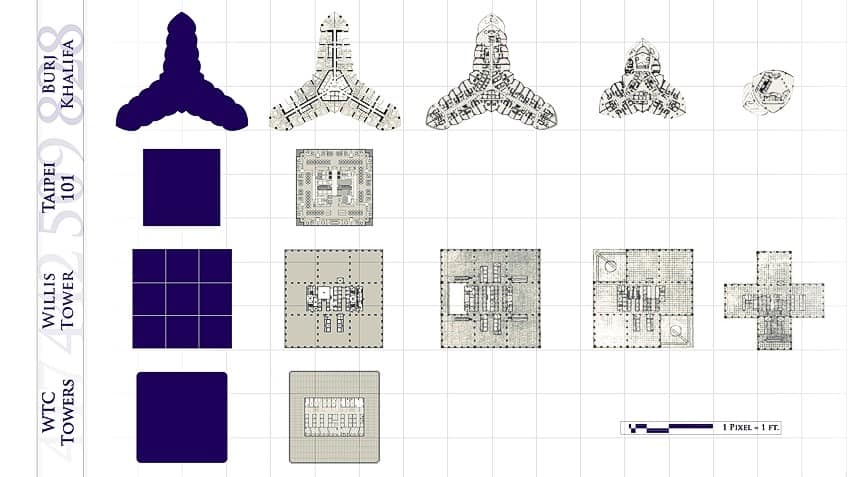
Lastly, the Burj Khalifa builders were all from a company called the Samsung C&T Corporation. This company headed up the actual construction of the building, but the company has been the central contractor in several other structures, such as the Cleveland Clinic in Abu Dhabi and the Incheon International Airport.
This particular company has had a hand in many contemporary constructions.
The Burj Khalifa’s Purpose and Uses
The Burj Khalifa is a mixed-use building. This means that it is not meant to serve any one role, such as being an office building. Instead, it is comprised of a number of different purposes. There is office space in the building, and it makes up 37 floors of the total floor count. There are also nearly a hundred floors of residential space, a nightclub, a hotel, an observation deck (which is also the highest outdoor observation deck in the world), a communication center that is aided by the incredible height, and of course a restaurant near the top with the tower, and that restaurant is also the highest in the world from ground level.
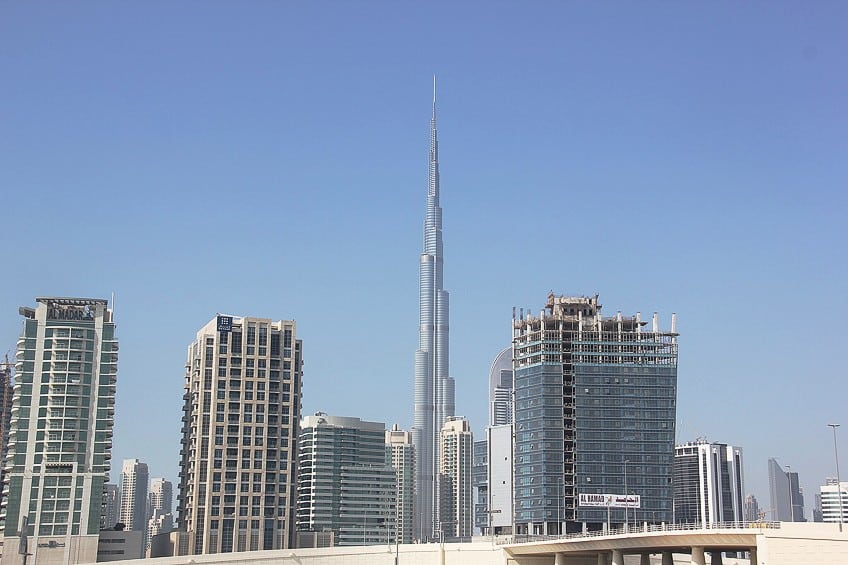
The general purpose of the Burj Khalifa as this mixed-use structure was to be the center of a specific development plan known as Downtown Dubai. The idea was for the entire area to be developed into a variety of construction projects, and the Burj Khalifa was to be the crowning jewel of that development plan. Many of the Middle Eastern countries have, for many decades, relied entirely on oil revenues to maintain their economies, but there has been a concerted push to move away from this sole reliance on oil production as oil will not necessarily be used forever, and developments such as these are considered to be important to attempt to ensure that regions such as this are able to retain their wealth once oil no longer becomes a viable part of the world economy.
The Burj Khalifa’s Records
Upon completion, the Burj Khalifa broke a vast array of records. Most of these records have to do with the Burj Khalifa’s height. The obvious one is that it quickly became the tallest building in the world, but other than this, it attained records for being the tallest freestanding structure, having the most floors, containing the longest travel distance for the elevators within its walls, having the world’s highest nightclub, and more height-related records. The Burj Khalifa, as these few stated records show, really and truly banked on its height above practically every other architectural feature that the Burj Khalifa could be known for. There were many other interesting aspects of the design, as was noted above, but the height of this incredibly massive skyscraper is where all the attention generally goes, and that does make sense. It is the tallest building in the world, after all.
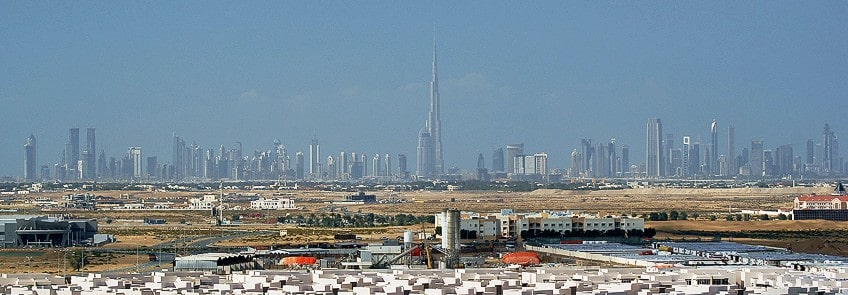
We have come to the end of our look at the Burj Khalifa. The world’s tallest building in Dubai has quite a history behind it, and in this article, we examined that history alongside a discussion about the building’s architects, purpose, height, and various other aspects of the construction as a whole. Hopefully, you have learned a good deal about the Burj Khalifa today, but there are many other buildings out there that could receive your attention now. So, remember to always keep learning!
Frequently Asked Questions
What Is the Burj Khalifa?
The Burj Khalifa is a megatall skyscraper located in Dubai, United Arab Emirates. It finished construction in 2009 and ever since then, it has retained its title as the tallest building in the world. The skyscraper was constructed along Neo-Futurist lines, and as such, it was designed with the latest in architectural features for the time and has remained one of the most stunning examples of this architectural style.
What Is the Burj Khalifa’s Height?
The Burj Khalifa’s height is, by far, its most notable feature. This is the world’s tallest building, and so its height is its most famous element, which measures at 829.8 m (or 2,722 ft). In addition to this, it has 154 floors and is absolutely filled to the brim with various mixed-use occupants, from residential to commercial space. The height has stood as a crowning achievement of Dubai for well over a decade, and that will continue to be the case in the future.
What Is the Burj Khalifa’s Purpose?
The Burj Khalifa is a mixed-use skyscraper. For this reason, there are no technical limits on what the building could accommodate. At present, the Burj Khalifa contains many floors full of office space, some are comprised of residential apartments, a hotel, a communications section, an observation deck, and even a restaurant. The Burj Khalifa is not only one thing, and thanks to its immense height, it’s practically a vertical city.
How Long Did It Take to Build the Burj Khalifa?
The Burj Khalifa took six years to complete as it started its construction back in early 2004 and was only completed at the very end of 2009. The opening took place on 4 January 2010, but even upon officially opening the building to the public, it was still not entirely complete. The exterior was completed, but the interior still required additional work. This is a lengthy development period, but for something of this incredible scope, it is faster than one might expect.
When Was the Burj Khalifa Built?
The Burj Khalifa was completed in 2009, but it was only opened in 2010. The Burj Khalifa has retained its place as the world’s tallest building ever since it finished construction, and it is likely to retain that record for a very long time to come as there are no other buildings currently in development that could ever hope to surpass the Burj Khalifa’s height.
Justin van Huyssteen is a writer, academic, and educator from Cape Town, South Africa. He holds a master’s degree in Theory of Literature. His primary focus in this field is the analysis of artistic objects through a number of theoretical lenses. His predominant theoretical areas of interest include narratology and critical theory in general, with a particular focus on animal studies. Other than academia, he is a novelist, game reviewer, and freelance writer. Justin’s preferred architectural movements include the more modern and postmodern types of architecture, such as Bauhaus, Art Nouveau, Art Deco, Brutalist, and Futurist varieties like sustainable architecture. Justin is working for artfilemagazine as an author and content writer since 2022. He is responsible for all blog posts about architecture.
Learn more about Justin van Huyssteen and about us.
Cite this Article
Justin, van Huyssteen, “Burj Khalifa – Learn About the World’s Tallest Building in Dubai.” artfilemagazine – Your Online Art Source. July 18, 2023. URL: https://artfilemagazine.com/burj-khalifa/
van Huyssteen, J. (2023, 18 July). Burj Khalifa – Learn About the World’s Tallest Building in Dubai. artfilemagazine – Your Online Art Source. https://artfilemagazine.com/burj-khalifa/
van Huyssteen, Justin. “Burj Khalifa – Learn About the World’s Tallest Building in Dubai.” artfilemagazine – Your Online Art Source, July 18, 2023. https://artfilemagazine.com/burj-khalifa/.



